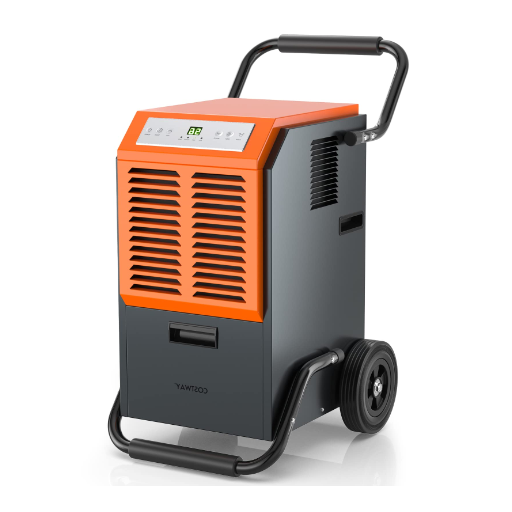Controlling moisture levels is a critical factor in maintaining healthy and efficient environments, particularly in commercial and industrial settings. Excess humidity can lead to a myriad of problems, including structural damage, equipment malfunction, and the proliferation of mold and mildew, all of which can disrupt operations and inflate maintenance costs. This guide dives deep into the world of commercial dehumidifiers, spotlighting both industrial-grade and portable options designed to tackle a range of humidity challenges. Whether you’re managing a warehouse, office space, or industrial facility, understanding the capabilities, benefits, and ideal applications of these devices is key to optimizing performance and safeguarding your operations.
Understanding Commercial Dehumidifiers
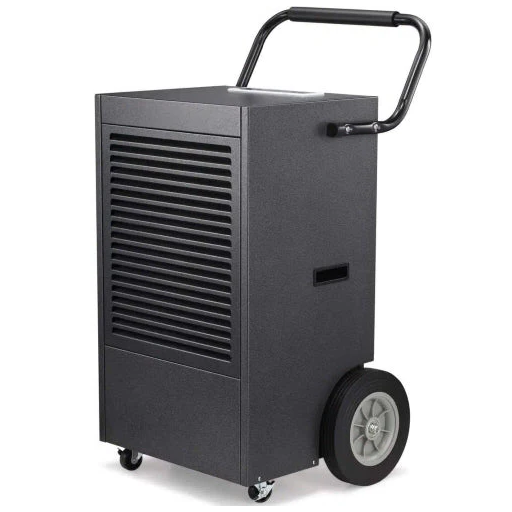
What is a Commercial Dehumidifier?
A commercial dehumidifier can be classified as a rough and tough device put in place in areas like large office spaces, industrial premises, specifically warehouses, factories, and other big commercial or industrial structures to regulate the look of the room and, more than that, humidity levels. Another remarkable quality of these dehumidifiers as opposed to domestic dehumidifiers is that they can absorb much larger volumes of moist air them being effective within a much larger cubic area.
The principal aim of a commercial dehumidifier is to suck the excess moisture out of the air which prevents the negative effects of high moisture content, which include harmful health effects such as the growth of fungi on moist surfaces, damage to wooden structural elements as well as other laminated and composite materials, corrosion, breakdown of systems, and poor air circulation. However, through the provision of uniform temperature and humidity, they are rather beneficial in terms of maintaining the integrity of equipment and goods that they are a part of, along with ameliorating conditions for the workers/space inside.
These include portable types that are usually best suited for smaller rooms or when the dehumidifier is required for certain short periods, and stationary, very large structures that are bought for a particular size of use. Efficient use of energy, adjustability of RH, or investment in good quality raw materials are some of the advanced elements that make it an essential equipment in industries overly dependent on environmental and safety-driven performance.
Benefits of Using Commercial Dehumidifiers
Commercial dehumidifiers are indispensable in industrial and commercial settings in ensuring that the air is in perfect conditions. The greatest advantage is, without a doubt, the elimination of excessive humidity since it usually leads to Mould formation, equipment decay, and damage to the commercial building. These gadgets also play an important role in ensuring the safety of valuables purchased by users from being spent on repair or replacement purposes.
Besides improving air quality, benefiting users equally contributes to the installation of these units. For example, a high level of humidity may increase the levels of dust mites and mildew. This was the case with dehumidifiers at an all-girls school, where there was an improvement in the air quality, which served to increase the comfort level among the students during respiratory health activities in the school’s houses. Newer and dehumidified air is devoid of such; therefore, it improves more than air quality but the comfort, and it does not contribute to adverse health, such as respiratory health, of the inhaled individuals. It is evident to control such high humidity in areas, especially those that carry food substances that spoil quickly, because dehumidifiers that most storage facilities use help from dampness and increase shelf lives since they kill living organisms such as mold.
Last but not least, commercial dehumidifiers assist in ensuring that the building consumes the least amount of energy. Excess moisture increases the workload on the HVAC systems, which further translates to a decrease in the cooling or heating efficiency and ultimately increases the energy bill. With proper control of the humidity levels in the building, the efficiency of both the heating and cooling systems is enhanced by the dehumidifiers, which results in lower costs of running the business. These activities associated with the use of commercial dehumidifiers for a safe, healthy, and productive economy without environmental depletion are very important.
Types of Commercial Dehumidifiers
Commercial dehumidifiers are produced with special attention to the needs of larger industrial settings, and ensure there is optimum control in the air moisture content. Looking at these devices, they can be classified into three classes based on how they operate and where they are supposed to be used:
- Refrigerant Dehumidifiers: These are the type of dryers where from the name, they are based on the refrigeration system and they make use of a cooling coil to cool the air, thus removing the moisture. These are ideal for temperature-controlled applications with high humidity levels and temperatures above 50°F, such as warehouses, office spaces, and the like. They are also cost-effective and efficient in warmer climates, but in low temperatures they might not work as good.
- Desiccant Dehumidifiers: These operate by passing the air through an absorbent material that soaks up the water from it. Desiccants are very effective in places where the temperature is usually low and the humidity is low, now, and this makes them very useful in cold storage buildings, or industrial processes where there is a requirement to control levels of moisture in the air. The most common disadvantage of these units is that they normally demand more power, but the absence of this somewhere in the unit is what allows it to be successfully applied to some specific spheres.
- Hybrid Dehumidifiers: This is why hybrid dehumidifiers have been researched and developed, as these systems combine a broad range of advantageous characteristics of not only the refrigeration desiccant dehumidifiers. These units can address a wider range of temperature and humidity extremes, hence can be applied more effectively for different purposes. Plant operations and convention centers are good examples where they are hot and humid environments within the construction at times.
Before deciding on any particular dehumidifier type, be it for commercial or even industrial, a number of factors such as the climate in the surrounding area, the state of the structure, the levels of energy consumption or conservation, and its expected serviceable life will be necessary. It is important to note that each of these models comes with its pros, which the designer, in specializing in such a device, should strive to realize to achieve optimal results.
Key Features of Industrial Dehumidifiers
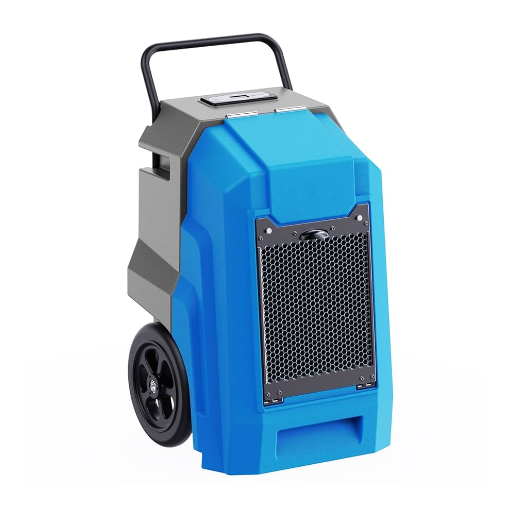
Energy Efficiency and Performance
All the advanced competitive issues discussed with industrial dehumidifier selection regard the rationalization of energy and costs, as they have a direct effect on outlay and efficient working. It is common in modern-day condensers to have dedicated energy recovery systems, VSD compressors, among other technologies that assist in the reduction of energy intensities without reducing capacity. For instance, equipment with a high Energy Efficiency Ratio (EER) removes more moisture relative to the power input, and it is fit for energy-conscious end-user sectors.
Besides, design factors such as Dehumidifier’s Moisture Extraction Capability, which is generally measured in terms of pints or liters per day, are very essential for every brand needed in the protection of each facility. Equipment for commercial purposes has a higher percentage of operation, of course, and therefore can be quite efficient as well and remain robust in certain environments, including swings in temperatures and humidity. State-of-the-art hardware assembles numerous components and controls, including in particular hardware and software intelligent enough to service real-time automated environmental controls, enhancing the efficient use of energy.
Use of these high efficiency utility arrangements ensures that, besides energy consumption, there is additional leverage of equipment wear that leads to lessening necessitated servicing and renewal costs. Applying efficient dehumidification rates that satisfy the requirements of the facilities’ functions and the use of energy mitigation strategies minimizes energy usage, improves, and saves costs for the organization.
Capacity Ratings: 60 Pint vs. 70 Pint
There is a significant difference in the removal and the performance of 60 and 70 pint dehumidifiers. Standard rating is that a 60 pint dehumidifier is established to remove 60 pints of moisture from the air over a span of 24 hrs. This moisture absorption capacity fits well with medium-sized rooms, which are 1500-2500sq. ft. in dimension, such as basement, living, or working areas, having mediocre humidity conditions.
Contrarily, a 70-pint dehumidifier removes even more, thus making it fit for spaces in which more demanding conditions prevail, for example, up to 3,000sq ft., or spaces that have an extremely high humidity level. This type of dehumidifier is about efficiency, with big compressors and an air filter, so it is quite strong even in regions with too much moisture or in situations where it is continuously running for long periods.
It is important to remember that there is a lot of unused space in the volume due to the height of the ceilings, which also has to be considered when making the assessment, as well as the degree of humidity and the energy consumption of the equipment. Such larger units as a 70 pint dehumidifier may have higher purchase prices but will be cost-effective in the end, especially in areas wanting extreme dehumidification, where 60 pint dehumidifiers are budget devices. Lastly, read the Energy Star ratings and the added features, such as the presence of adjustable humidistats, programmable timers, as well as drainage systems, while selecting the appropriate dehumidifier.
Dehumidifier with Drain Hose Options
Consider the site characteristics, humidity, and water drainage dehumidifier with a drain hose, which is the most suitable depending on the place of the device installation. These are useful models in settings where the unit is needed to run for long periods of time, for example, in basements or in other damp locations. Such models have the advantage of providing the ease of exertion as long as there is a hose channel specifically for drainage that is attached to the device. Most of these machines have such systems that enable the attachment of a standard garden hose for this purpose. However, some produce specific hoses along which the drainage system is cut to size for the length of a hose, which helps in effectiveness.
Currently, technological advances have transformed modern dehumidifiers with features that enhance performance and user friendliness. As an example, lots of contemporary dehumidifiers are now fitted with internal pumps that allow siphoning off of water either upwards or over long distances. This describes the situation where there are no existing floor drains, and there are vertical inclinations that the drain hose has to overcome. Both perform at exceptional levels and place a strong emphasis on being defect-free for an extensive period.
While checking the dehumidifier hoses, one should look at factors like the length of the hose, distance to the drain, and energy conservation. Furthermore, regular cleaning of the device, including proper maintenance of the drain hose and blockage of its entrance, will be very helpful with these machines. With appropriate selection and care of the machine, installation of a dehumidifier with a drain hose pippin can help improve the indoor environment properly, controlling moisture levels in many types of environments in an effective manner.
Practical Applications of Dehumidifiers
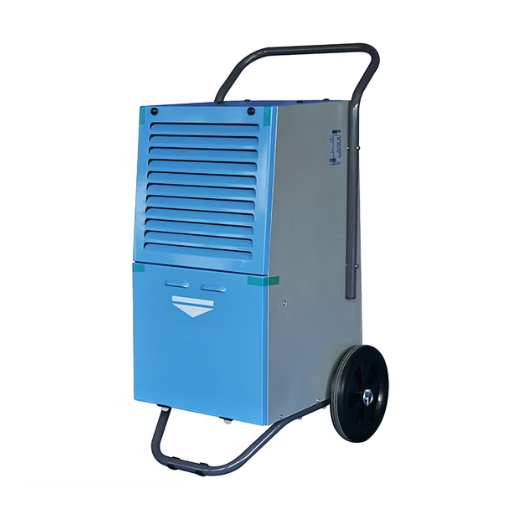
Using Dehumidifiers in Warehouses
Many warehouses find themselves struggling with high humidity issues, which may adversely affect perishable items, cause equipment breakdown, and mold growth, or filthy, stained surfaces as well. Using dehumidifiers in these facilities will help to control the humidity, thus maintaining the quality of the product, particularly those most vulnerable ones, such as pharmaceuticals, computers, and various other products that perish under changing conditions.
The latest industrial desiccant dehumidifiers feature and incorporate every necessary feature, including adjustable settings of humidity, robust capacity of water removal, and technically supported energy usage for larger spaces, more than anything else. To be specific, large desiccant dehumidifiers have been proven to effectively operate under low temperature conditions, such as in frozen food storage areas of a warehouse.
The majority of warehouses should be maintained with temperatures ranging from 40% to 60%; deviations from normal limits may exacerbate the problem of condensation, resulting in deteriorating properties and an increase in costs associated with maintenance. There may also be numerous installations of such appliances as, for instance, loading docks, refrigeration units, and areas with large volumes of airflow that require heat restructuring for better energy conservation pertaining to humidity control.
Complementing this, the use of technology such as the convergence or incorporation of the Internet of Things within infrastructure and buildings makes it possible for the dryers to be placed and adjusted even in far-flung buildings, where the area needs to be standard and also where other precautionary measures need to be taken with disregard to other factors like weather.
Effectiveness in Basements and Crawl Spaces
Places such as basements and crawl spaces suffer a great problem when it comes to the issue of relative and absolute atmospheric humidity. This is common in a cool, moist area that is blocked by the ground and does not have enough natural ventilation. These rooms provide an environment conducive to the development of fungi, rotting of wood, and weakening of the structures, putting the stability of the building in question. The ability to maintain a stable environmental condition within such areas may be achieved when the use of high-performance desicants, which can only be applied in areas of interest, is used. Humidifiers in the present society are smarter than before; they are fitted with advanced sensors that can continuously monitor the levels of humidity and increase or decrease their output in a bid to maintain as much of a comfortable surrounding as possible, without wasting energy resources in the process.
These devices can also feature an array of gadgets and gizmos that, along with other resources, can enable them to function in places that are otherwise not convenient to reach. Especially when the machines are fitted with IoT technology, real-time monitoring, and in the case of dehumidifiers, control is made possible. Such systems provide real-time information on various parameters, including temperatures, humidity, and the amount of energy being consumed, thereby making it easy to improve their operational performance. Data from these dehumidifiers situated in basements and crawlspaces, for example, usually contains HEPA filters to get rid of pollution, which might have some more advanced sensors that can improve the air indoors.
Studies have proved that the mould spore counts cannot exceed the threshold of over sixty percent of the relative humidity in the internal environment. In case of basements and crawl spaces, legible seasonal flooding or high humidity, especially for more than six months, efforts should be made in the reinstalment of a sump pump and a dehumidification system. Advanced systems can also keep track of any movements in the moisture levels and such an event, alert the user’s phone on the go; this facilitates the prevention of more damage by acting early. The marriage of computing and building engagements, however, is more than just a threat to property safety as it points to how indoor heating technologies can also provide services and use energy resources better, and most of all, in a fashion that they can be synchronized.
Portable Dehumidifiers for Garages and Workshops
Portable dehumidifiers play a significant role in controlling the level of humidity in spaces like garages and workshops, where intrusive moisture retention tends to be prevalent. In particular, such confined spaces do not encourage the volume of moisture to escape, which is comfortably breathable to a variety of people. This would thereby result in usages like rusting of tools, disturbing the appearance or appearance or stored items, growth of mold or mildew, and the like. Rooms where there is not much fresh air and ceiling limits are not enough to encourage the air currents might cause high humidity problems, which must be curtailed. Through appropriate portable dehumidification, necessary protection is provided by removing ions that can trigger these allergens without harming the designs and their content.
Advantageously, warrantable improvements have been made on the traditional portable dehumidifiers for so many benefits when it comes to operation and especially handling. Most reports indicate that mechanical devices are linked to 40 to 60% relative humidity in operations. Some are also equipped with hygrometers that allow easy and exact reading of the moisture levels. And, now other companies have converged both connectivity and willingness into dehumidifier applications. With this setup, you can make changes to settings from the mobile application, receive alerts in case the water reservoir is full, etc. Energy-saving developments are also extremely useful for effective operation and reducing operating costs at homes and plants, which extensively utilize dry tropical regions.
Lastly, some model dehumidifiers are capable of handling the challenges posed by the indoor pollution experienced in the workshops and garages. Dehumidifiers capable of carrying out high performance can extract 50-70 pints of moisture per day, which effectively deals with the damp surroundings of these areas. They usually have features consisting of long-lasting materials, which aid in the application, especially in a workshop where they are exposed to both caustic chemicals and pressures. Through the use of the proper portable dehumidifier, equipment and merchandise can be saved, and a safe and efficient working area can be enhanced that addresses biomedical concerns in relation to air quality and the presence of mold.
Choosing the Right Commercial Dehumidifier for Sale
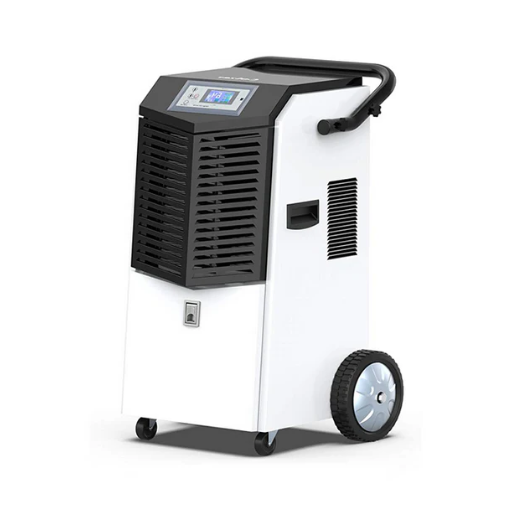
Factors to Consider Before Purchase
Capacity, first and foremost, is largely determined by the number of pockets of water the dehumidifier can remove over a twenty-four-hour period, with the typical measuring unit being pints. This value is expected to be in line with the size of the room and the extent of dampness in the space. For very large industrial settings or buildings that encourage excessive humidity, dehumidifiers having high capacity are necessary in order to function effectively with the appropriate air quality.
Another aspect to consider is the energy efficiency rating, or EER. The larger the value of the EER, the lower the electricity consumed by the appliance, a feature that is particularly important in normal situations and even more so when considering long-term use. Those who are concerned with the electrical consumption of these machines should seek out those units that are certified under Energy Star in order to make sure they conform to certain criteria regarding efficiency.
It is also recommended to note the characteristics which these systems possess, for example, the possibility to set a relative air humidity within the structure, external drainage tubes, overriding system. The inclusion of these allows one to increase the manageable part of the process and decrease the number of actions that require specific human attention. On the other hand, air purifiers often encounter various air particulates and allergy-inducing substances, so there is a definite need for a sound air cleaning device.
The life span and the structure of the dehumidifier should also be taken into consideration. Dehumidifiers intended for commercial use have to be designed in such a way that they can withstand even the most severe operating conditions, conditions that may involve dust, chemical compounds, and even variations in temperatures. A dehumidifier with metal housing, which has no chances of corroding, and components that are more resistant in case they are prone to wear, would make the unit last when used in harsh environments. A long-lasting and efficient machine is also characterized by comprehensive guarantees and various parts that can still be easily found over time; therefore, such a machine would be worth buying.
Comparing Industrial vs. Portable Options
Larger locations and industries install industrial crane rentals, while companies rent portable lifts, meant for short periods, for startups or small business centers.
|
Aspect |
Industrial |
Portable |
|---|---|---|
|
Capacity |
High Output |
Moderate Output |
|
Flexibility |
Stationary |
Mobile |
|
Dimensions |
Large |
Small |
|
Power Need |
High |
Moderate |
|
Scope |
Wide Area |
Limited Area |
|
Expense |
High Cost |
Budget-Friendly |
|
Setup |
Complex |
Simple |
|
Lifespan |
Long |
Moderate |
|
Efficiency |
Energy-Intensive |
Energy-Saving |
|
Purpose |
Heavy-Duty |
Light-Duty |
Maintenance and Care for Longevity
Maintenance and regular care activities are crucial for enhancing the performance and longevity of equipment, no matter the fact whether it is heavy-scale equipment or some light-duty machine. The major points here include both eliminating causes of failure and frequent inspections:
- Renaissance Missions: Carry out regular inspection activities to determine the age, chemical, mechanical, or loose item malfunctioning that may lead to its non-function. Note findings to help you see the pattern where the problem is.
- Timed Servicing: Stick to all the guidelines and timelines provided by the manufacturers. Replace the necessary parts, such as the filters, belt, or fluid, in the systems to remove the waste of resources and sudden breakdowns.
- Clearing Requirements: Remove dust, dirt, or any unwanted substances in totality that could be present inside the drive mechanism or any electrical components. Using the right methods, such as light brushes, compressed gases, or mild soaps, would not damage the equipment in this fragile state.
- Lubrication and Greases: The moving assemblies should be well-oiled in all doors. The specified lubricating oil needs to be utilized for the specified moving components in the correct quantity so as to minimize the friction and increase the life span.
- Optimal Production: Use the machinery according to the enrolled/design conditions in terms of the load, temperature, as well as the ambiance. In this regard, overloading the equipment or even using it in the wrong environment can cause it to deteriorate prematurely.
- Checking Over and Liquidation: The other tool to use is periodic calibration to ensure performance remains at the recommended levels in maintaining the standards all the time. Testing the critical operational elements is important as it helps zero any developed problems before they get to troublesome levels.
- Reduction in Usage of Old Parts That Can Be Refilled: Old parts have to be changed proactively, and not wait for things to get worse and interrupt the ongoing operations. Keep watch on the number of times particular stressed components were used.
- Documentation of Maintenance Activities: Once the plan is in place, the next logical thing to do is to keep a note of all activities and actions taken, spare parts substituted, as well as the previous problems. This information is important for planning preventive maintenance and meeting the standards requirements.
By taking these recommendations and aligning the practices of maintaining the equipment with the expectations, organizations reduce the outlays due to losses and breakdowns, as well as ensuring the sustenance of the investment over a long period.
Top Commercial Dehumidifiers Available
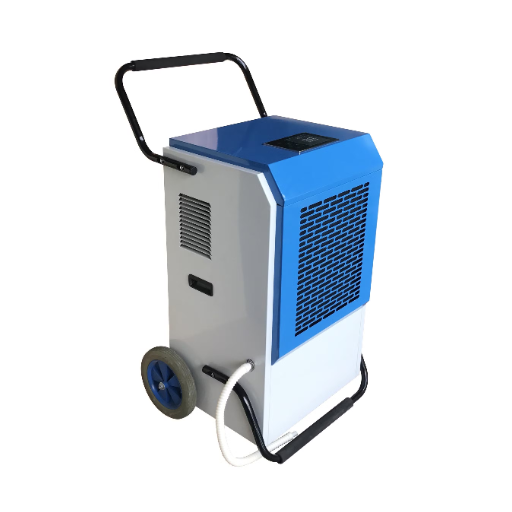
Review of Popular Models
1. THE ALORAIR Sentinel HD55
The ALORAIR Sentinel HD55 is efficiency embodied. This high structural efficiency dehumidifier is designed for commercial places and basements. It can manage up to 55 pints of air per day at AHAM standard conditions. Zealously framed with impeccable metal, this guarantees the durability of the dehumidifier, resisting all forms of wear and tear seen in its external environment. Other exciting controls are digital moisture sensors, a heater defrost system for operation at very low temperatures, and compatibility with a remote handset, which has to be bought separately. The Sentinel HD55 unit is also Energy Star rated, hence it is a good energy-saving dehumidifier that also takes care of the environment in air moisture control. This works effectively in the range of 1,300 square feet without the consumer needing to venture too far into activities for which they may not have full knowledge.
2. THE Aprilaire 1850 Pro Dehumidifier
The Aprilaire 1850Pro is a dehumidifier that is made to dehumidify a house economically. It can extract 95 pints of moisture from space per day, and is very useful for large commercial houses in that it adds up to more than 5200 square feet. Its air coils are made of corrosion-resistant material, aluminum, and require minimal attention from the maintenance department since it’s a washable type of dehumidifier. It has an astounding performance when used with the heating, ventilation, and air conditioning system (HVAC) in air cleaning because the ducting system helps to have an airflow from all spaces. The built-in auto-restart function ensures that the power supply is not interrupted, making it more reliable. The durable and easy-to-use design of this commercial-grade dehumidifier indicates why this is considered a top-notch product by the company.
3. Dri-Eaz Revolution LGR
Water damage restoration and even high-foot traffic areas require specialized products that are designed for heavy workloads. The Dri-Eaz Revolution LGR dehumidifier falls in this category of professional units. The unit also employs Low Grain Refrigerant (LGR) technology in expelling moisture, and in such cases, it manages about 80 pints within 24 hours. Though as capable as claimed, the Revolution LGR has a very compact structure, easy to carry around and place where needed for use. Each one of these mechanisms is interlocked through built-in digital systems for monitoring of humidity levels and dehumidifying performance in real-time. Furthermore, the functional and robust model of this dehumidifier comes in a stackable, thin, and tall construction, making it perfect for construction or data restoration service providers.
4. BlueDri BD-76 Commercial Dehumidifier
As a result, the BlueDri BD-76 strikes a perfect balance between efficiency and affordability by being able to remove up to 150 liters of moisture per day when working under the most challenging conditions. It is especially great for cleaning buildings and large basements, as well as wide industrial environments. The unit comes with a water tank with an automatic water pump, which can operate up to 24 hours a day to make it ideal for any user. Moreover, due to the hose extensions, it is possible to apply this unit via a remote control. It also works perfectly with the surrounding environment, where high humidity may damage other appliances, and has an automatic turn-on/off switch. With its high performance and airtight design, the BD-76 will suit any commercial purpose that requires a large dehumidifying device.
5. Lower Energy Consumption for Meaco 38Lm Commercial Dehumidifier
For more energy-efficient operation, the Meaco 38Lm model ameliorates efficient performing commercial dehumidification up to 38 liters daily while extracting compressed air of up to 38 liters of air per day. This growing market has always considered energy efficiency, and so Meaco 38Lm is one of the most efficient and cost-effective options for these applications. This type of dehumidifier can be conveniently used in various areas like storage, factories, workshops, offices, and the like. Thanks to its quiet operation and a built-in hygrometer, it is a reliable embed for maintaining steady air moisture levels. The rugged wheels enable easy mobility as well. Despite the highest technological characteristics of this device, Meaco manufacturers managed to offer it at a very competitive price, certainly appealing to the customers interested in the most economical devices.
These dehumidifiers that are currently available in the market are quite efficient in terms of a combination of robust functionality and state-of-the-art technology innovations, and user-friendly designs. Each unit will have its advantages and disadvantages based on the available spaces and humidity levels, and working conditions. These parameters should be taken into consideration together with future service costs before making a decision.
Where to Find Commercial Dehumidifiers for Sale
When you want dehumidifiers, especially of the commercial grade, equipment that is highly rated and that their types are unique, then I suggest you go to where such businesses are better known. One of the choices you have is a Wisdom Dehumidifier. Many consumers have already purchased dark ones that boast of various functions suitable for industrial and, more recently, commercial purposes. It’s possible to read all product information like teh inert dehumifier features on this sitewhich makes it easy to choose the correct type for your use. Be it a heavy-duty dehumidification of a hall, a hotan of the teh, a fully enclosed and air-conditioned greenhouse which is 100% humidity, and so on.
They are quick and detail-oriented as far as the selection of the right dehumidifier as including the operational needs of the buyer, the space, and the cost of the system. Their website is very interactive and fully functional, allowing buyers or any persons checking on the items to be in a position to read any details that are beyond the images, so that informed buying decisions can be made.
Ordering systems involves the proper availability of any component required, and within this context, besides providing the item itself, Wisdom Dehumidifier provides such support services as maintenance services and user Orientation on how to operate the machine well and what to do when it stops extracting humidity. This is critical in making sure efficiencies of operations are maintained in the short term and the product attains its full expected operational life. Having understood this and wanting to purchase such branded equipment, I therefore believe if one trusts Wisdom Dehumidifier, then they will not only buy reliable 21st-century equipment, one that is of good quality and hyped, but also get a lot of information to cast long shadows of its existence.
References
-
Assessing Consumer Values and the Supply-Chain Market for the Integrated Water Heater/Dehumidifier – This source provides insights into market analysis and target markets for dehumidification systems. Link to source
-
An Assessment of Desiccant Cooling and Dehumidification Technology – This report discusses energy impacts and market breakthroughs in the commercial dehumidification sector. Link to source
-
Dehumidification Characteristics of Commercial Building Applications – This paper analyzes dehumidification requirements in various building applications and climates. Link to source
Frequently Asked Questions (FAQ)
Q: What is a commercial dehumidifier for sale?
A: A commercial dehumidifier for sale is a high-capacity appliance designed to remove excess moisture from the air in commercial and industrial settings. These units help improve indoor air quality and prevent mold growth, making them essential for businesses like construction sites, warehouses, and other environments where moisture levels can become problematic.
Q: How do I choose the right commercial dehumidifier for my needs?
A: When selecting a commercial dehumidifier for sale, consider factors such as the size of the area, the moisture level, and the unit’s pints per day capacity. For larger spaces, a high-capacity model may be necessary, while smaller areas might benefit from a pint portable dehumidifier. Additionally, look for a commercial dehumidifier with pump or one that includes a drain hose for basements to facilitate moisture removal.
Q: Can a commercial dehumidifier prevent mold?
A: Yes, using a commercial dehumidifier can effectively prevent mold growth by maintaining optimal humidity levels. By removing excess moisture, these units help create a dry and comfortable environment, which is crucial in places like crawlspaces and basements where mold can thrive.
Q: What are the benefits of using a commercial dehumidifier with a drain hose?
A: A commercial dehumidifier with a drain hose allows for continuous moisture removal without the need to manually empty the water tank. This feature is particularly beneficial in high-humidity environments, such as construction sites or areas with poor ventilation, ensuring that moisture is constantly being removed and minimizing the risk of costly repairs due to water damage.
Q: How does a pint commercial dehumidifier with a drain compare to other models?
A: A pint commercial dehumidifier with a drain is specifically designed for efficient moisture removal in smaller spaces. While it may have a lower capacity than larger models, it is often more lightweight and portable, making it ideal for temporary setups or areas with limited space. It’s essential to assess the inventory of available models to find one that suits your moisture removal needs.
Q: What features should I look for in commercial dehumidifiers?
A: When shopping for commercial dehumidifiers, look for features like digital controls for easy operation, high-capacity moisture removal rates, and options for a hose for basements or vent hose attachments. These features enhance usability and efficiency, ensuring the dehumidifier is effective in various environments, including offices and retail spaces where employee and customer well-being is a priority.
Q: How do commercial dehumidifiers improve indoor air quality?
A: Commercial dehumidifiers improve indoor air quality by removing moisture that can lead to mold growth, dust mites, and other allergens. By maintaining a balanced humidity level, these dehumidifiers help create a healthier environment for employees and customers, reducing the risk of respiratory issues and promoting overall well-being.
Q: Are commercial dehumidifiers energy-efficient?
A: Many modern commercial dehumidifiers are designed with energy efficiency in mind. When selecting a unit for sale, check for energy ratings and features that minimize power consumption. High-capacity units can remove large amounts of moisture while using less energy, making them a cost-effective solution for managing humidity levels in commercial spaces.
Q: What is the average cost of a commercial dehumidifier for sale?
A: The cost of a commercial dehumidifier for sale varies widely based on features, capacity, and brand. Generally, you can find models ranging from a few hundred to several thousand dollars. Investing in a quality dehumidifier can prevent costly repairs associated with excess moisture and mold damage, making it a worthwhile expense for many businesses.

